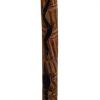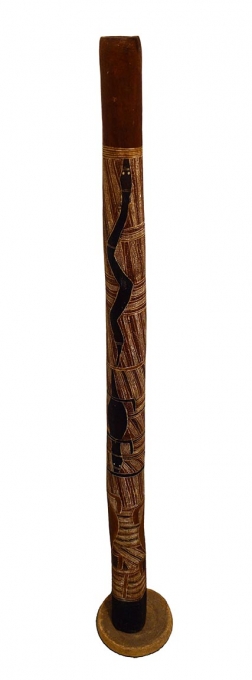Legend has it that at the beginning of the world, everything was cold and dark. Bur Buk Boon was preparing a fire to warm, protect and enlighten his family when he picked up a piece of wood. He noticed that the log was being eaten away from the inside by termites. Bur Buk Boon, who did not want to hurt the termites, brought the log to his lips and began to blow. The termites were blown into the sky, forming the stars, the Milky Way and illuminating the entire landscape. For the first time, the sound of the didgeridoo blessed Mother Earth, protecting her and all the spirits of the Dreamtime with this vibrant sound for eternity. The didgeridoo is an instrument played by the Aborigines of Northern Australia, particularly in Arnhem Land. Its use goes back a very long way, to the Stone Age according to historians. Indeed, the didgeridoo is depicted in a cave painting dating back 20,000 years. It is an instrument similar to the alphorn or the Tibetan tonggin. It is a wooden horn made mainly of eucalyptus. As the legend goes, the termites feed on the inside of the tree and along its entire length. The mouthpiece is usually covered in beeswax. The didgeridoo is cylindrical (about 6 cm in diameter) and about one to two metres long. On the outside, the instrument is decorated and painted by the aborigines with motifs from their clan or scenes from mythology.
ANONYME
Didgeridoo , c.1950
Art : Aboriginal
Origine : Autres / Others
Dimensions : 6 x 119 x 6 cm
Medium : Wood
Price : Nous contacter / contact us
N° : 4325

